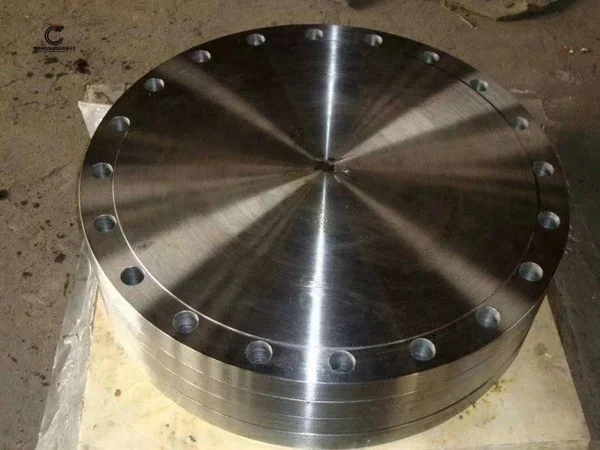The Producing Process of Blind Flanges
A blind flange is a connection used in a piping system, which is usually used to close one or more branches or holes in a piping system. Blind flanges usually consist of two circular metal plates with a hollow space between them that can be secured by bolts or nuts.
The main function of the blind flange is to close one or more holes in the piping system for maintenance, overhaul, or replacement of equipment in the piping system. They are commonly used in piping systems in the chemical, oil, gas, and other industrial sectors.
There are many types of blind flanges, and different types are suitable for different piping systems and working environments. Several common types will be introduced below.
1. Flat blind flange: The shape is round or square, and its thickness is usually the same as the wall thickness of the pipe. It is usually used in low-pressure piping systems because of its poor sealing performance.
2. Flange blind flange: The shape is similar to ordinary flanges, but it has no holes and threads, so it can be used to close some parts of the pipeline system, usually used in medium-pressure pipeline systems.
3. Movable blind flange: The shape is similar to ordinary flanges, but it can be opened and closed, so it can be used in pipeline systems that require frequent maintenance, usually in high-pressure pipeline systems.
4. Spherical blind flange: The shape is spherical, and its sealing performance is very good. It can be used in high-pressure and high-temperature piping systems and is usually used in piping systems in the petroleum, chemical, and electric power industries.
5. Vacuum blind flange: The shape is similar to ordinary flanges, but it can be used in a vacuum environment and is usually used in piping systems in the fields of semiconductors, aerospace, and scientific research.

The production process of blind flange:
1. Material preparation: blind flanges are usually made of carbon steel, stainless steel, alloy steel, and other materials. In the production process, the required materials need to be prepared first, and the inspection and screening of materials should be carried out.
2. Cutting: Cut the prepared materials according to the required size. The cutting method can adopt various methods such as shearing, flame cutting, and plasma cutting.
3. Punching: According to the specifications and requirements of the blind flange, punch holes in the material. The punching method can adopt various methods such as manual punching and numerical control punching.
4. Processing: process the punched material, including chamfering, polishing, drilling, etc. These machining steps improve the accuracy and surface finish of blind flanges.
5. Assembly: Assemble the processed parts, including flanges, flange gaskets, bolts, etc. Pay attention to the tightening strength of the bolts and the material and thickness of the gasket during assembly.
6. Inspection: inspect the produced blind flange, including appearance inspection, size inspection, material inspection, etc. Only those that pass the inspection can leave the factory for sale.
In short, a blind flange is one of the indispensable connectors in the pipeline system. Its type and production process varies according to its use and material, but they all need to be produced and inspected in strict accordance with standard specifications and quality requirements.
Carbon Steel Flange & Stainless Steel Flange
Advantages and scope of use of sliding flanges






